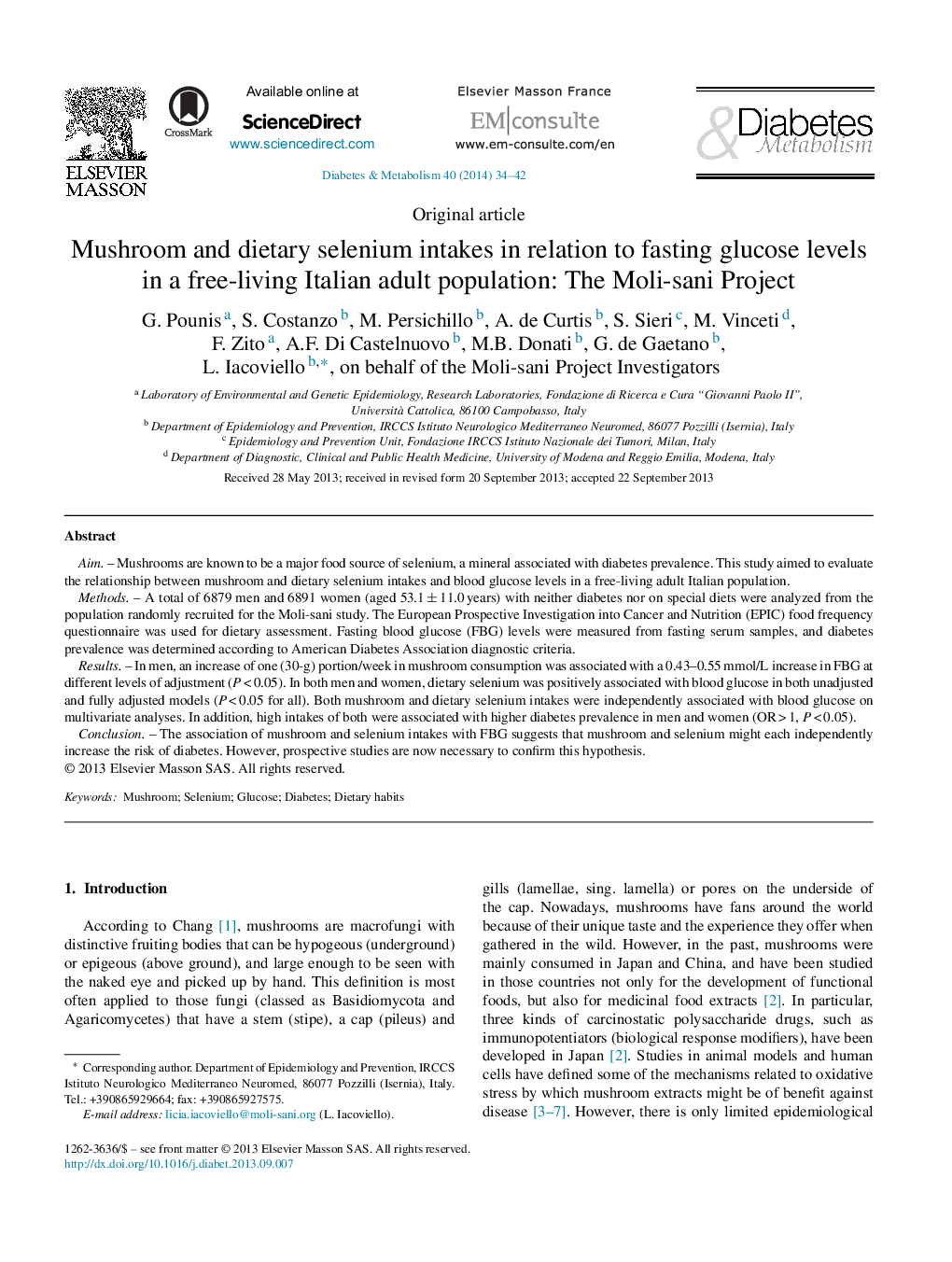| Article ID | Journal | Published Year | Pages | File Type |
|---|---|---|---|---|
| 3259387 | Diabetes & Metabolism | 2014 | 9 Pages |
AimMushrooms are known to be a major food source of selenium, a mineral associated with diabetes prevalence. This study aimed to evaluate the relationship between mushroom and dietary selenium intakes and blood glucose levels in a free-living adult Italian population.MethodsA total of 6879 men and 6891 women (aged 53.1 ± 11.0 years) with neither diabetes nor on special diets were analyzed from the population randomly recruited for the Moli-sani study. The European Prospective Investigation into Cancer and Nutrition (EPIC) food frequency questionnaire was used for dietary assessment. Fasting blood glucose (FBG) levels were measured from fasting serum samples, and diabetes prevalence was determined according to American Diabetes Association diagnostic criteria.ResultsIn men, an increase of one (30-g) portion/week in mushroom consumption was associated with a 0.43–0.55 mmol/L increase in FBG at different levels of adjustment (P < 0.05). In both men and women, dietary selenium was positively associated with blood glucose in both unadjusted and fully adjusted models (P < 0.05 for all). Both mushroom and dietary selenium intakes were independently associated with blood glucose on multivariate analyses. In addition, high intakes of both were associated with higher diabetes prevalence in men and women (OR > 1, P < 0.05).ConclusionThe association of mushroom and selenium intakes with FBG suggests that mushroom and selenium might each independently increase the risk of diabetes. However, prospective studies are now necessary to confirm this hypothesis.
